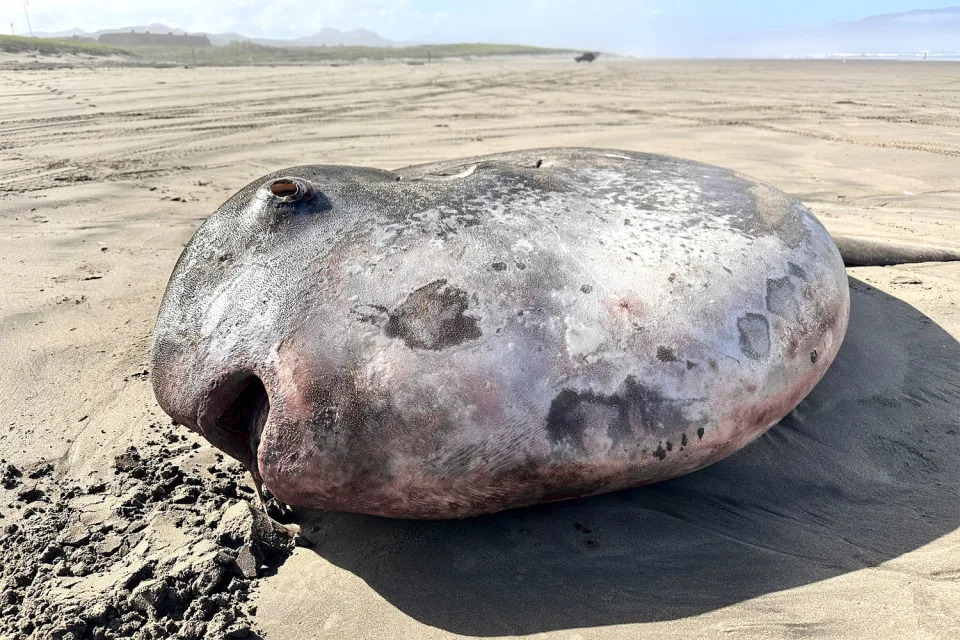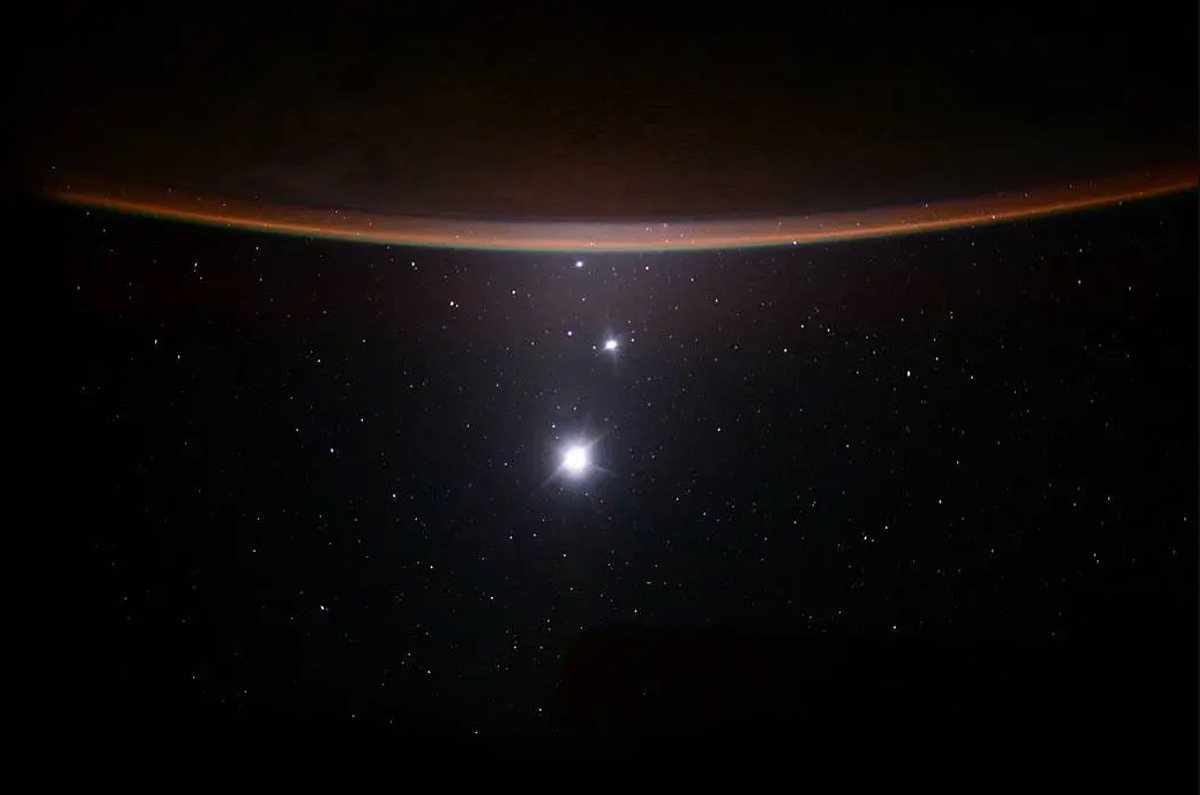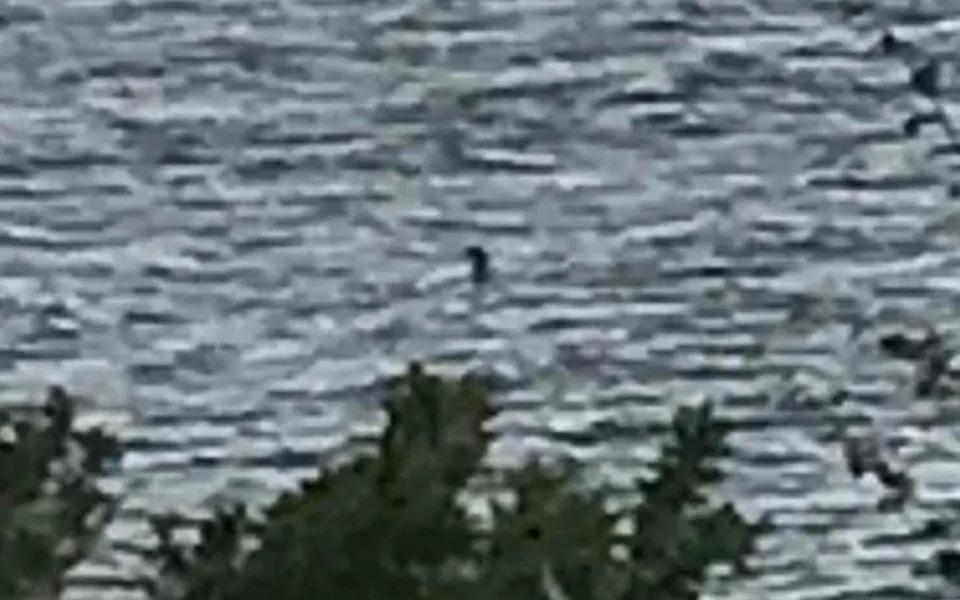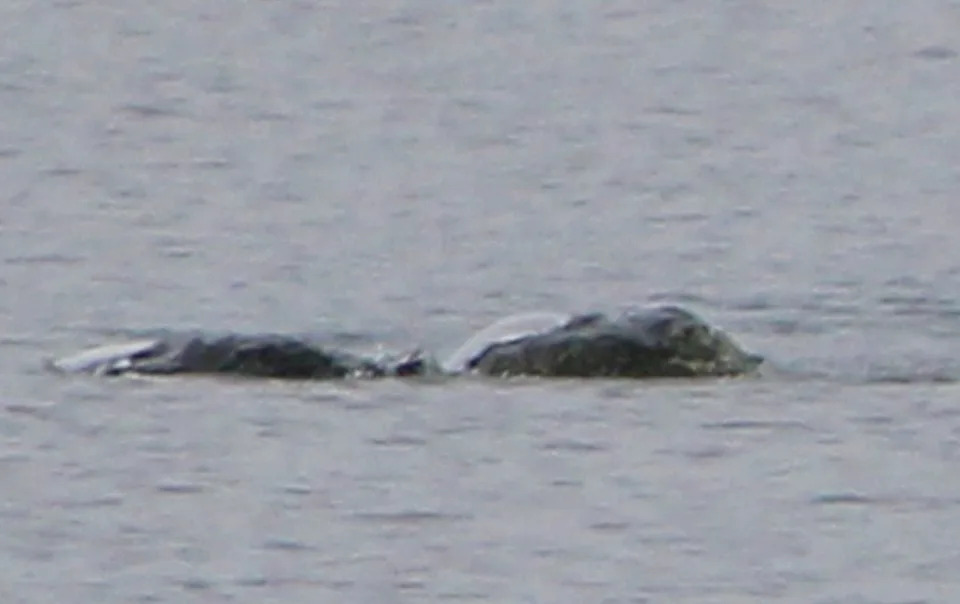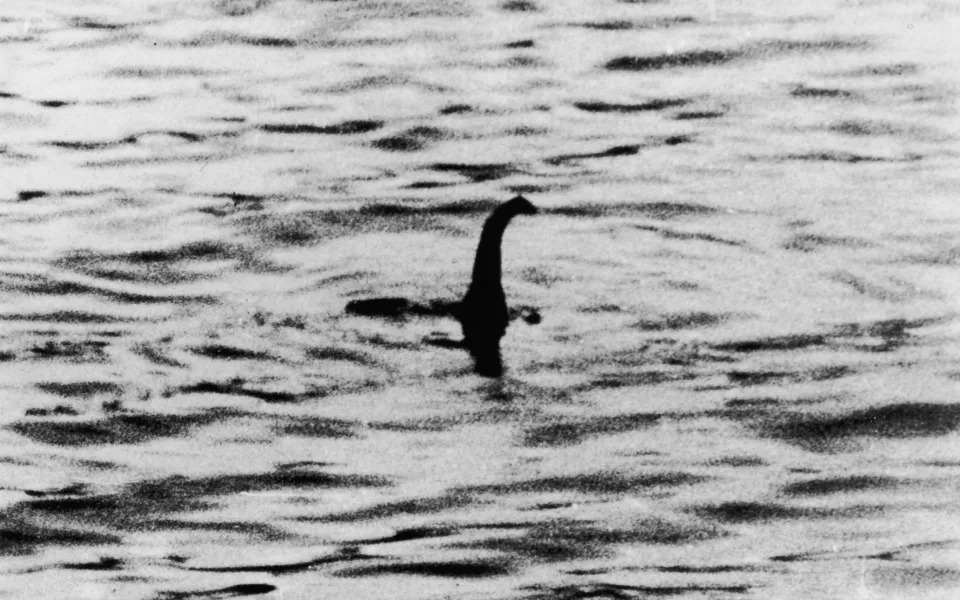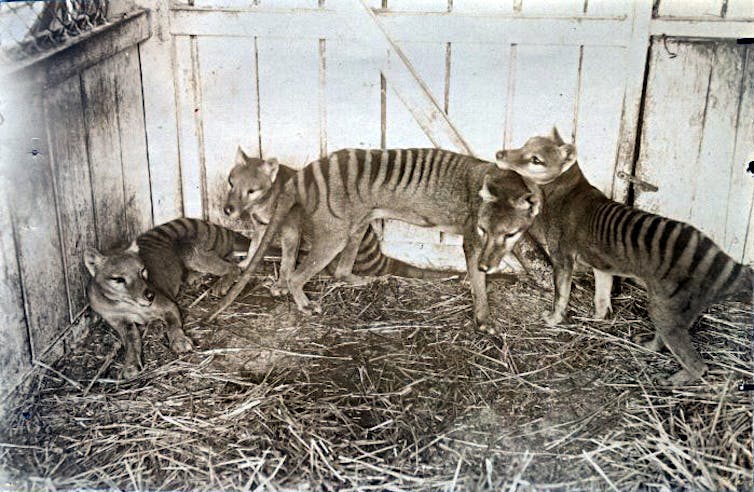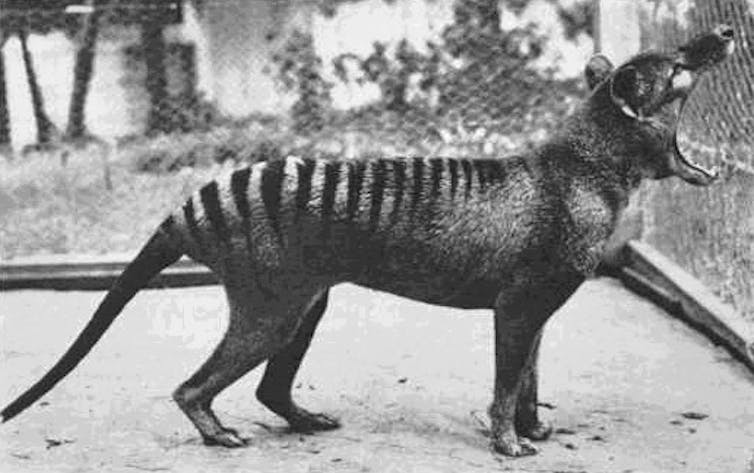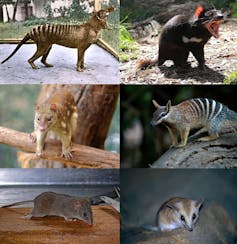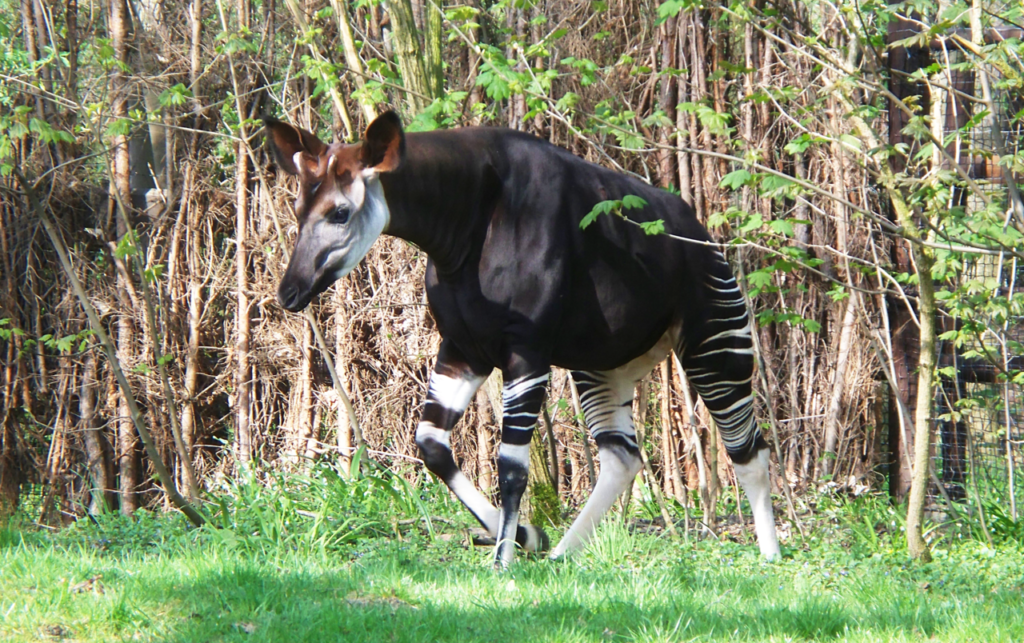Theory emerges after fish from dark legend washes up on beach
Scientists are analysing the body of a three-metre-long 'doomsday' fish which was discovered dead on a beach.
Michael Dahlstrom
·Environment Editor
Wed 13 November 2024
A rare 'Doomsday fish' was found on Grandview Beach in Encinitas and was spotted by Scripps Oceanography PhD candidate Alison Laferriere. Source: Alison Laferriere/Scripps Institution of Oceanography
A giant oarfish has been photographed washed up on a rocky beach. It’s the second time the remains of this rarely encountered species have been documented off the southern Californian coast this year, and scientists are working on a theory as to why.
For centuries, dark legends have linked the species to natural disasters like earthquakes, leading to it being colloquially referred to as the “doomsday fish”. There has been speculation the deep sea species could be brought to the surface during underwater tremors, although this has not been scientifically proven.
After the first oarfish was discovered in August near San Diego, California, a 4.4-metre magnitude earthquake was detected in Los Angeles, prompting some locals to discuss the superstition.
Need more stories about weird discoveries? 🪼😳 Subscribe to our newsletter.
Legend links oarfish to earthquakes, although there is no scientific evidence linking them to the disasters. Source: Alison Laferriere/Scripps Institution of Oceanography
'Devil wind' theory linked to 'Doomsday' fish death
The latest discovery occurred last week at Grandview Beach in San Diego County. The three-metre-long fish was discovered by a student at Scripps Institution of Oceanography, the institute that analysed the last specimen.
The body was collected and hauled to a research facility, where samples were collected to try and understand more about the fish. While the cause of death is yet to be determined, the Institute has formed two possible theories.
Its marine vertebrate collection manager Ben Frable said, “it may have to do with changes in ocean conditions and increased numbers of oarfish off our coast. Many researchers have suggested this as to why deep-water fish strand on beaches.”
“Sometimes it may be linked to broader shifts such as the El Niño and La Niña cycle but this is not always the case. There was a weak El Niño earlier this year.”
Frable also noted the beaching coincided with the recent red tide, a type of algal bloom that produces toxins that can kill people, marine life and birds.
The coast was also struck by strong, extremely dry Santa Ana winds, also known as "Devil winds" which can cause cold water to rise from below the surface layer of the ocean, and trigger large waves. In popular culture they're rumoured to affect people's moods, and during the hotter months they're known to fuel out-of-control wildfires.
"Many variables could lead to these strandings,” Frable added.
In September, two Aussie fisherman caught an oarfish off the Top End. The long, slender fish is rarely seen in Australian waters
Newly discovered creature the 'size of two basketball courts' photographed underwater
The 'mega' coral is believed to be the world's largest – and could hold a special key for scientists.
Michael Dahlstrom
·Environment Editor
Updated Thu 14 November 2024
The "mega coral" was discovered off the Three Sisters island group in the Solomon Islands. Source: Steve Spence/National Geographic Pristine Seas
An ancient marine organism has been detected underwater by a research vessel north of Australia. At 34 metres wide, 32 metres long and 5.5 metres high, and with a circumference of 183 metres, the discovery team described it as being as big as two basketball courts or five tennis courts.
Described as a “mega coral” by the discovery team from National Geographic, what’s remarkable about the find is that it is one standalone network of identical polyps, rather than a reef. It’s believed to be the world's largest coral after growing uninterrupted for 300 and 500 years in waters surrounding the Solomon Islands.
There are no records of the giant organism on the island, which has been inhabited by humans since between 28,000 and 30,000 BCE.
From National Geographic’s vessel Pristine Seas, the coral was initially thought to be a shipwreck, and it was only after underwater cinematographer Manu San Félix dipped under the waves that he found it was a brown, red, yellow and blue Pavona clavus – a widespread but rare stony coral.
An aerial photograph shared by the ship's crew shows the ocean giant compared to their vessel. Others taken underwater show hundreds of fish swimming around it, highlighting its important role as a marine habitat.
Although it appears stationary, coral is an animal. Each polyp has a mouth that opens directly into a stomach, which is surrounded by a circle of tentacles that are used for defence and attacking prey.
Want more news about rare creatures? 🦜🦉 Subscribe to our newsletter.
World's largest coral discovered off Solomon Islands
National Geographic divers measure the massive coral. Source: Manu San Félix, National Geographic Pristine Seas
How important is this mega coral discovery?
Pristine Seas founder Enric Sala said the find was significant and compared it to discovering the world’s tallest tree. “Just when we think there is nothing left to discover on planet Earth, we find a massive coral made of nearly one billion little polyps, pulsing with life and colour,” he said.
While the coral discovery has caused elation, the Pristine Seas crew are concerned about its future. Because of its size and position deep in the ocean the coral appears to be healthy, but other parts of the reef which were closer to the surface were heavily degraded.
This week the IUCN announced 44 per cent of warm-water reef-building corals had now been added to its Red List of species threatened with extinction. Climate change remains the greatest threat to the world’s tropical reefs, and they are projected to decline by 70 to 90 per cent at 1.5 degrees of warming above preindustrial average temperatures. At 2 degrees of warming, 99 per cent will likely be lost.
What are the other largest organisms in the world?
Measuring more than 180 square km, the Posidonia australis seagrass meadow in Shark Bay is the largest plant.
At 115.55 metres, the world's tallest tree is the Hyperion, a coastal redwood in California.
The world's largest ever animal is the blue whale, which can grow to 30 metres long and weigh more than 180,000kg.
The giant organism is made up of genetically identical polyps. Source: Manu San Félix, National Geographic Pristine Seas
Coral key to island nation's survival
Following National Geographic’s announcement, Solomon Islands Prime Minister Jeremiah Manele said reefs were important in providing livelihoods for the region. “Our survival depends on healthy coral reefs, so this exciting discovery underlines the importance of protecting and sustaining them for future generations,” he said.
The coral is the summation of millions of identical polyps. Because it has lived for generations, the researchers believe it could hold important genetic information that could be key to coral survival during periods of climate change.
“It is a natural monument that has seen the arrival of the first Europeans to these waters,” said San Félix, who was the first to spot the record-breaking mass. "Illustrious figures of humanity have coexisted with this colony: Newton, Darwin, Curie, Gandhi, Einstein... and it has survived them. It now stores information on how to survive throughout the centuries,” he said.
